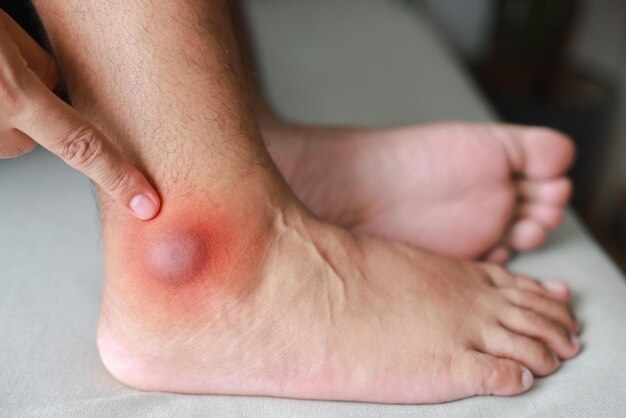Peroneal tendonitis is a condition characterized by inflammation of the peroneal tendons, which are located on the outer side of the ankle and foot. These tendons play a crucial role in stabilizing the ankle and supporting the arch of the foot, making their proper function essential for mobility and overall foot health. This article explores the symptoms, causes, and treatment options for peroneal tendonitis.
Symptoms of Peroneal Tendonitis
Individuals with peroneal tendonitis may experience a variety of symptoms, including:
- Pain: A common symptom is pain along the outer side of the ankle or foot. This pain may worsen with activity, especially during movements that involve ankle flexion or eversion (turning the foot outward).
- Swelling: Inflammation of the peroneal tendons can lead to swelling in the affected area, which may be visible or felt as a tightness.
- Tenderness: The outer ankle may be tender to the touch, particularly along the path of the peroneal tendons.
- Stiffness: Stiffness in the ankle, particularly in the morning or after prolonged periods of inactivity, can also occur.
- Weakness: Some individuals may notice weakness in the ankle, making it challenging to perform certain movements or activities.
Causes of Peroneal Tendonitis
Peroneal tendonitis can develop due to various factors, including:
- Overuse: Repetitive stress on the peroneal tendons from activities such as running, jumping, or prolonged standing can lead to inflammation and irritation.
- Improper Footwear: Wearing shoes that do not provide adequate support or cushioning can contribute to tendonitis. High heels, flip-flops, or shoes with insufficient arch support can increase the risk.
- Biomechanical Issues: Abnormal foot mechanics, such as overpronation (excessive inward rolling of the foot) or supination (outward rolling), can place additional stress on the peroneal tendons.
- Injury: Acute injuries, such as ankle sprains, can damage the peroneal tendons or the surrounding structures, leading to tendonitis.
- Underlying Conditions: Certain medical conditions, such as arthritis or diabetes, can increase the risk of tendonitis due to changes in the tendons or reduced circulation.
Treatments for Peroneal Tendonitis
Effective treatment for peroneal tendonitis typically involves a combination of approaches aimed at reducing inflammation, relieving pain, and restoring function. Common treatment options include:
- Rest: Avoiding activities that exacerbate the pain is crucial for recovery. Resting the affected area allows the tendons to heal.
- Ice Therapy: Applying ice packs to the affected area can help reduce swelling and alleviate pain. Ice should be applied for 15-20 minutes several times a day, particularly after activity.
- Physical Therapy: A physical therapist can design a rehabilitation program that includes stretching and strengthening exercises to improve flexibility and support the ankle.
- Orthotics: Custom orthotic inserts can help correct biomechanical issues and provide additional support to the foot and ankle, alleviating stress on the peroneal tendons.
- Medications: Nonsteroidal anti-inflammatory drugs (NSAIDs), such as ibuprofen or naproxen, can help manage pain and reduce inflammation.
- Corticosteroid Injections: In some cases, corticosteroid injections may be recommended to provide temporary relief from severe inflammation and pain.
- Surgery: If conservative treatments fail to alleviate symptoms, surgical intervention may be considered to repair damaged tendons or address underlying structural issues.
Peroneal tendonitis is a common condition that can significantly impact mobility and daily activities. Recognizing the symptoms and understanding the causes can help individuals seek appropriate treatment promptly. By taking preventive measures and following a structured treatment plan, most people with peroneal tendonitis can achieve a full recovery and return to their normal activities. If you experience persistent pain or swelling in your ankle or foot, consult a healthcare professional for an accurate diagnosis and tailored treatment plan.










